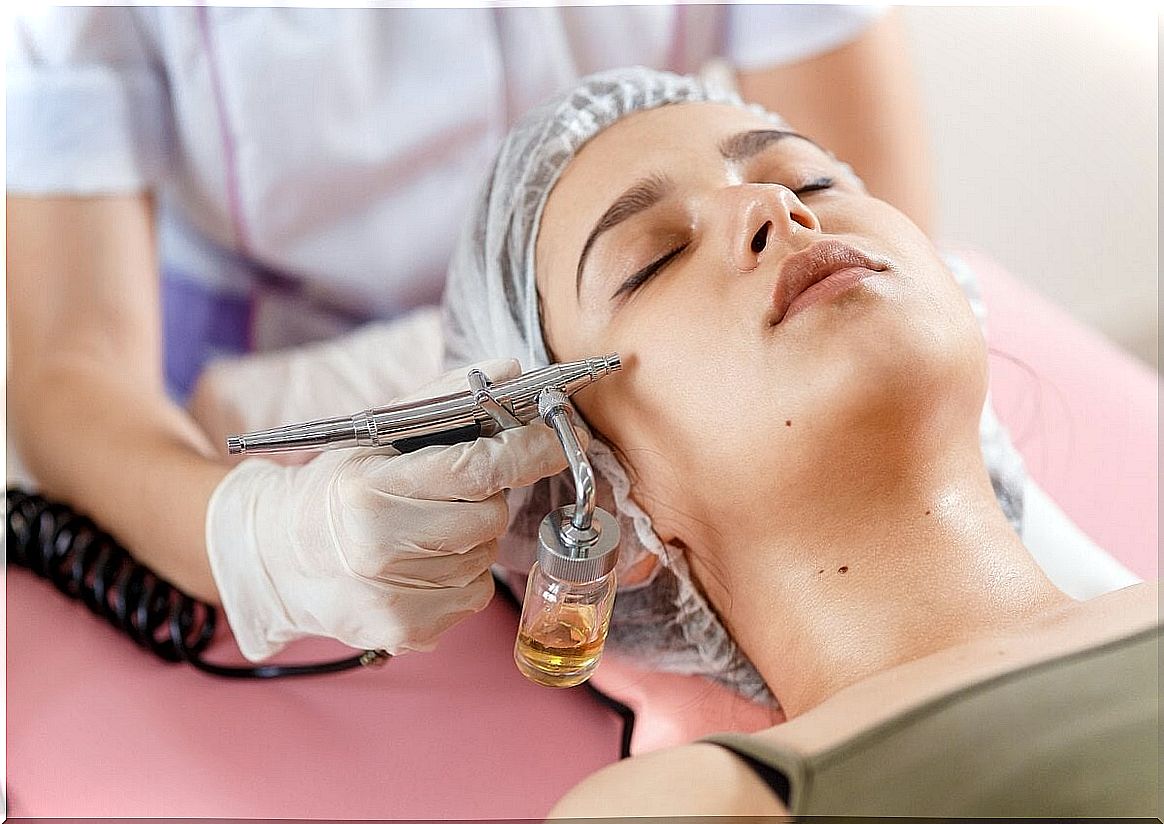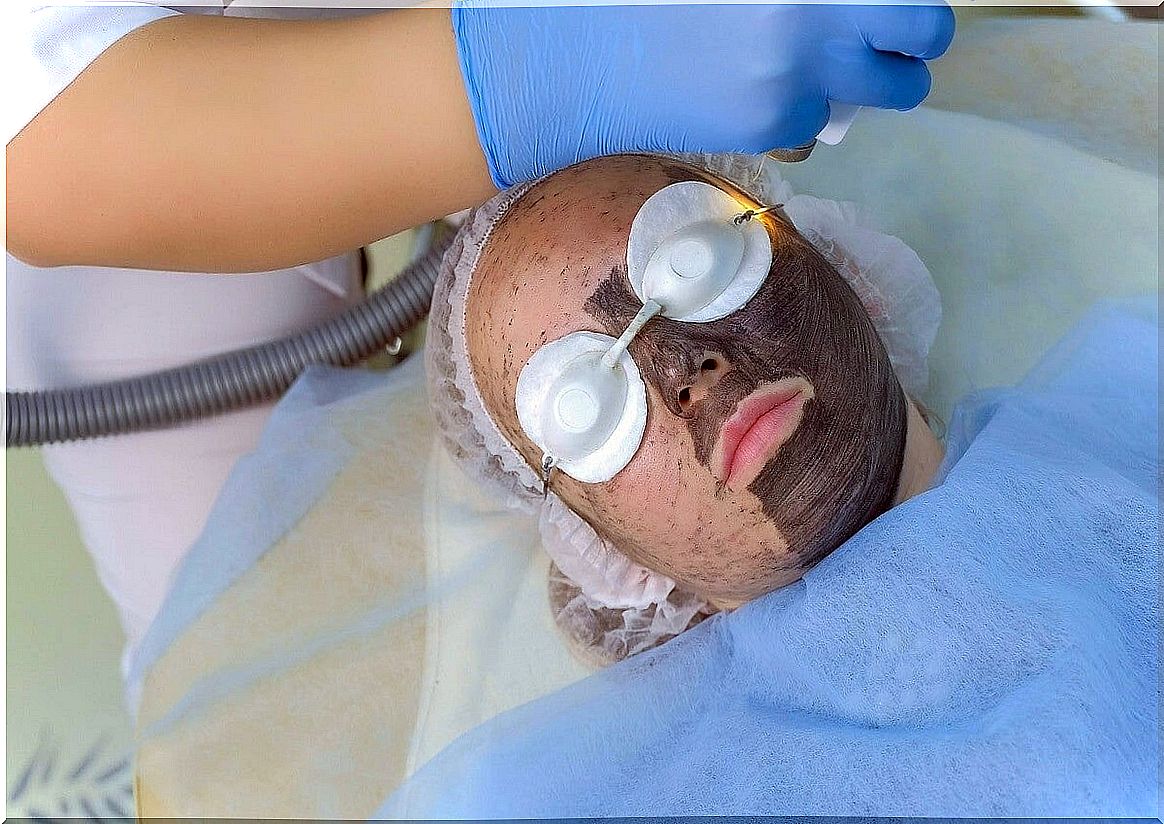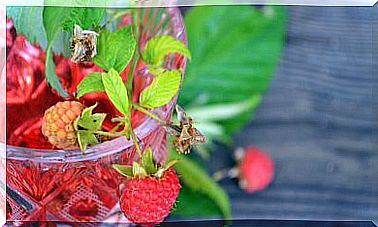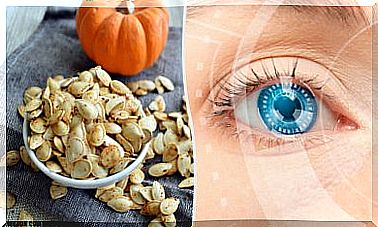10 Types Of Facial Peel
There are different types of facial peels that help correct skin surface imperfections. This aesthetic procedure has managed to position itself as one of the most popular, since it has interesting results in skin rejuvenation and the reduction of spots, acne, scars, among others.
To be more exact, it consists of a “controlled aggression” on the skin through the application of acidic substances. Its purpose is to remove a variable thickness of the dermis to improve its appearance in a significant way. Are you interested in knowing more about it? Here are the options that exist.
Types of facial peels
The types of facial peels are classified according to the depth of absorption of acidic substances and, therefore, the skin layer in which they act. In this way, we find superficial, medium and deep-acting varieties. What are the most used?
1. Lactic acid
Lactic acid is a substance that is part of the skin’s natural hydration system. It has similar effects to glycolic acid in terms of its ability to reduce the signs of aging, and its application increases the thickness, firmness and moisture of the epidermis.
During the peeling it is used in concentrations of 5% to 30%, according to the needs of the skin. In any case, it is not usually used by itself, but in combination with other acids or in low-concentration household formulas.

2. Mandelic acid
Mandelic acid is a derivative of bitter almond extract. A publication in The Journal of Clinical and Aesthetic Dermatology highlights that, due to its effectiveness, it is the alpha hydroxy acid most used for hyperpigmentation and acne treatments.
In particular, it has antimicrobial and antiseptic properties that are used to protect the skin. In addition, it is indicated for people with acne or melasma spots. It is even suitable for skin with rosacea or skin sensitivity. In the office it is used in concentrations of 30% to 50% and in home formulas of up to 12%.
Read also: How to prevent melasma
3. Salicylic acid
Salicylic acid has keratolytic properties that are used to treat hyperkeratosis or peeling skin conditions, such as dandruff, acne, seborrheic dermatitis, psoriasis and ichthyosis.
In a recent publication in Clinical, Cosmetic and Investigational Dermatology it was determined that it can be used safely in high phototypes.
4. Glycolic acid
Of all the types of facial peel , the one performed with glycolic acid is the most widely used and known for its effectiveness and few adverse effects. This is because it has the smallest molecule compared to the other acidic substances used. Thus, its penetration capacity is also greater.
On the other hand, scab, necrosis and desquamation can be controlled and minimized if used under optimal conditions. Specifically, in medical use, 30% to 70% is used in solution, gel or mask, according to the latest updates in Atdermae magazine .
5. Citric acid
Citric acid is the most used as a depigmenting agent in home creams. Its use became widespread recently as an adjunct in office peeling . It is not a strong acid, but it sensitizes the skin and enhances the effect of other acids. However, it is irritating and can cause burning.
6. Enzyme peeling
The peeling enzyme is a smooth surface and variety, which acts only at the level of the stratum corneum. Some of its uses and characteristics are the following:
- It can be used in summer, given its little photosensitizing effect.
- It is a comfortable and low-irritating method for in-office skin preparation.
- Due to its low irritant power, it can be used when it is preferred not to use acids.
- It can be used as a first step before putting on a mask.
7. Phenol
Phenol, also known as “carbolic acid” or “carbolic acid”, is an aromatic hydrocarbon derived from coal pitch, with a precipitating effect on proteins. The main indications for phenol peel include the following:
- Aftermath of severe acne.
- Severe photo damage.
- Severe wrinkles and skin laxity.
- Post-operative lifting to treat remaining wrinkles.
- Improve the quality of the skin.
Studies published in 2018 by Aesthetic Plastic Surgery suggest the effectiveness of this substance for the treatment of freckles. The peel it produces was called a ” chemical facelift ” because of its particular tightening effect.
In this way, the healing process that it triggers causes a stretching action and total cell renewal. Therefore, the result is a renewed, firm, pink skin that looks like wax or porcelain.

8. Pyruvic acid
Pyruvic acid is a rarely used alpha keto acid in the environment. This is due to the itching and burning that occurs when applied, and the intense post-peeling erythema shown by people receiving the treatment.
The main indications include seborrheic skin and those with inflammatory acne ; however, it can also be used for moderate photoaging. It comes in concentrations of 30% to 50%, although there are those who use it at 60%.
9. Trichloroacetic acid
Trichloroacetic acid became one of the most used from the 60s when it was postulated as a strong peeling alternative, but less aggressive than phenol. The substance can be used in various concentrations, ranging from 8% to 50%.
There are several presentations and pharmaceutical forms, such as solution, mask, gel and common and stabilized solution. Its indications are very varied, but in general it includes the following:
- Wrinkles (periorbicular, perioral, accessory lines of the nasolabial fold, etc.).
- Sequelae (post-acne marks, hypertrophic scars, burns or sequelae of skin grafts).
- Melanic spots, on skin up to phototype III.
- Photo damage in general.
- Dermatological (seborrheic, actinic, lentigo, ephelid keratoses, among others).
10. Retinoic Acid
Retinoic acid is a derivative of vitamin A, also called ‘tretinoin’, ‘acidic vitamin A’ or ‘trans retinoic acid’. Its use is common and extensive topically.
According to the information published in the American Society For Dermatology Surgery, it is effective for the treatment of acne, photoaging I and II, hyperpigmentation and ephelides.
It has a contact sensitizing and skin photosensitizing effect. Patients may experience a burning sensation when exposed to sunlight, as they have a thinned stratum corneum and a decrease in melanin.
Teratogenicity in systemic use is proven. Although there is no evidence of fetal malformations with topical use, it is recommended to avoid its use during pregnancy.
Skin care after a facial peel
The care after applying any of the types of facial peel is key to obtaining the desired effects. Therefore, whenever possible, it is necessary to reinforce the sun protection and avoid direct exposure to the sun. The use of moisturizing creams, without fragrances or alcohol, helps to obtain a slight flaking and without tightness.
While they are very popular, they are not harmless treatments. Consequently, they can leave scars or alter the color and texture of the skin. Therefore, its application must be made by a dermatologist or specialist doctor, who will also help determine the most suitable type of substance.








